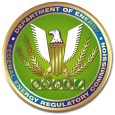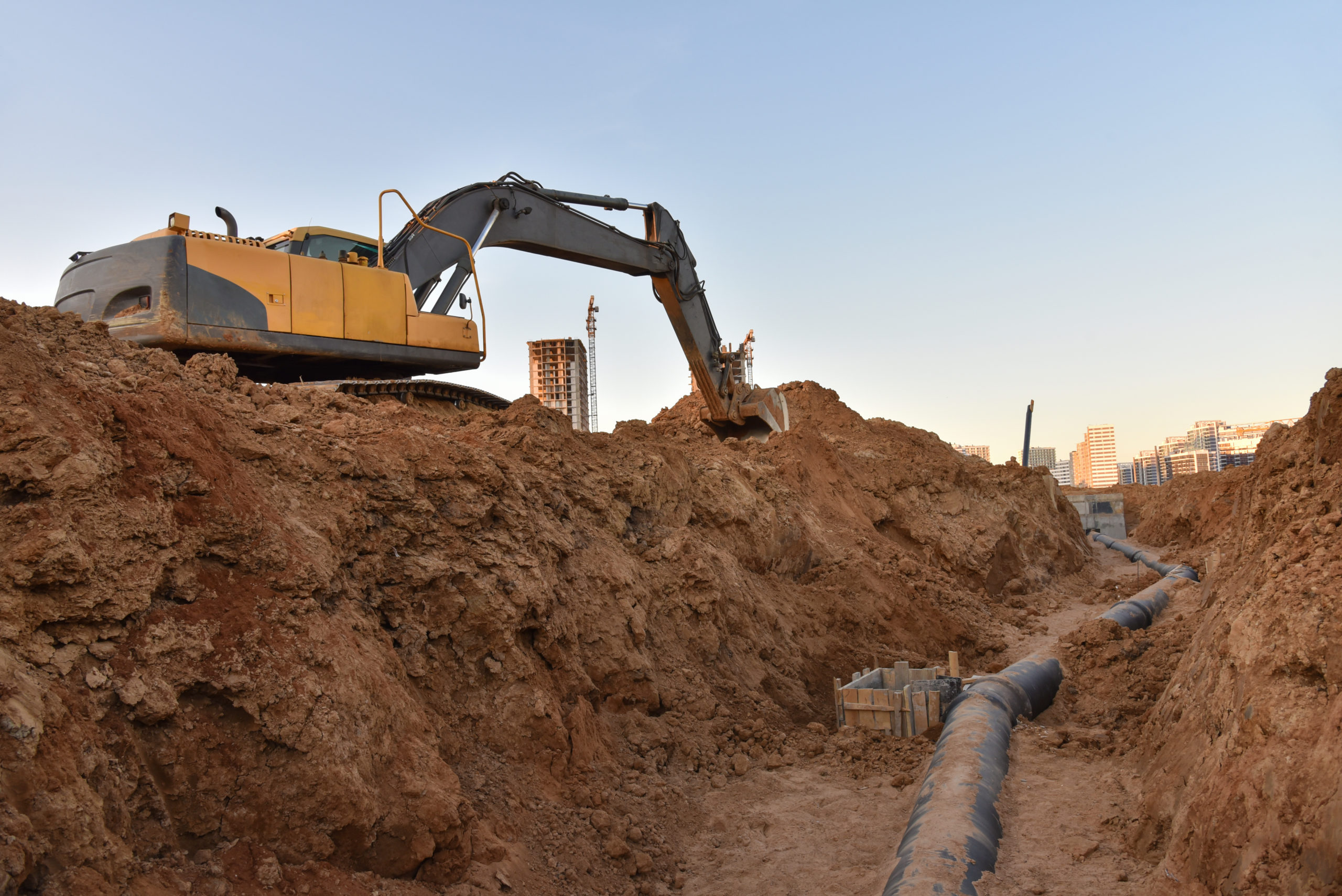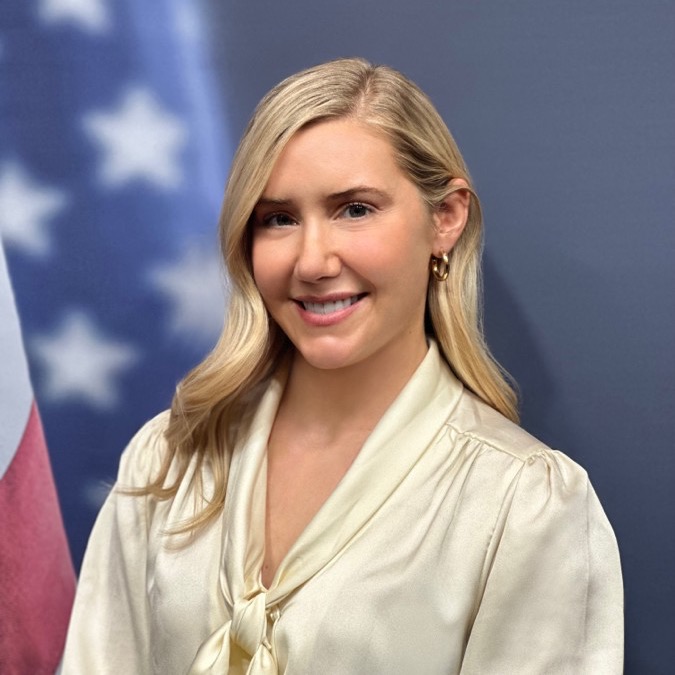As another brutally cold winter whips through the Northeast, it’s a good time to be in the fuel business, knowing that your product is helping keep people alive and businesses open. Yet in states like New York where oil and gas production is not appreciated as it should be, the business is quite challenging.
As CEO of National Fuel Gas Company, a diversified natural gas company with upstream, midstream and downstream operations that services the Buffalo region, Ronald J. Tanski is no stranger to the issues surrounding natural gas and makes a logical choice to chair the Interstate Natural Gas Association of America (INGAA) for 2015.
Tanski, 62, has worked for Natural Fuel Gas Company since 1979, serving in a variety of positions in both the regulated and non-regulated businesses. He was named CEO two years ago as part of a planned succession strategy after having run the day-to-day operations as president and COO since 2010. From exploration and production to transportation, Tanski has an energy background that few can match.
In this interview with P&GJ, Tanski discusses his background, his perspective of the natural gas business, and his priorities as chairman of the influential organization that represents the interests of North America’s large natural gas transmission companies.
QP&GJ: Where are you from and how did you decide on a career in the natural gas/pipeline industry?
Tanski: I grew up in western New York and received my B.A, M.B.A. and law degrees from SUNY [State University at New York] at Buffalo. Between my second and third year of law school, I worked as a law clerk at National Fuel Gas Company and had a great experience. After graduation, I wanted to start my law career in a corporate setting and National Fuel happened to be hiring at the time.
QP&GJ: What are your key priorities as chairman of INGAA?
Tanski: INGAA has three main focus areas for the upcoming year. They are:
1. Continuing voluntary efforts by INGAA member companies to continuously improve our industry’s pipeline safety, with a goal of zero pipeline incidents.
2. Facilitating a better understanding of gas supply and transportation requirements needed to meet the needs of the growing gas-fired electric generation market.
3. Providing a platform to discuss the issues involved in pipeline construction and infrastructure development.
QP&GJ: Overall, how positive is your outlook for the natural gas pipeline business for 2015?
Tanski: The outlook for the business is great, not only for 2015, but for at least the next six years. The rapid development of production from the shale basins has prompted the need for new pipeline infrastructure to move that production to market.
QP&GJ: Where should we expect to see the majority of construction the next few years and what will be driving this activity?
Tanski: Given the lead time necessary for major transmission projects, we’ve got pretty good visibility on proposed construction for the next few years. There are a number of projects on the drawing boards to move gas out of those shale basins, particularly the Marcellus and Utica shale-producing areas, and get that gas delivered to market areas.
There are two main drivers – each at the opposite end of a pipeline project. On the inlet side are the producers who are willing to commit to a pipeline to move their gas from an area where the basis differential may be high due to the lack of pipeline infrastructure. A new pipeline will allow them to ship gas to a market or hub where the price is higher. At the other end, there is new industrial and consumer demand, as well as new gas-fired electric generation, looking to take advantage of lower-priced and clean-burning natural gas.
As you know, historically natural gas moved from the Gulf Coast region up to major market areas in Chicago, the Mid-Atlantic and New England. Development of abundant shale gas has caused a real shift, now requiring pipelines to look at changing flow directions and adding new capacity to allow that production to move to the Southeast and the Gulf Coast, where it can be consumed or exported.
QP&GJ: Has your perspective changed since the sudden drop in commodity prices, though the price of natural gas seems to remain intact?
Tanski: No. I’ve seen a number of commodity price cycles during my career. While this one seems to be driven by the extremely successful results of shale drilling, those prolific reserves will need new infrastructure to get the production delivered to market.
QP&GJ: Many midstream companies are also involved in E&P activities. Do you expect the downturn in drilling to affect their plans to build infrastructure such as pipelines?
Tanski: The INGAA Foundation’s 2035 Midstream Infrastructure report, completed last year, included a low-growth case that was predicated on a steep decline in oil prices. That study determined that overall pipeline development (for natural gas, NGLs and crude oil) would slow down as the result of lower oil prices.
Granted, ICF International, the study’s author, assumed that the price of oil declined to around $70/b, not the $40/b that we are seeing now. Also, it is worth noting that the low-growth case assumes that oil prices decline over the projection period (i.e., through 2035), and we, of course, do not know how long the current low-price situation will last.
The reference, or base case, called for $640 billion in investment from 2014-2035; the low-growth case (with lower oil prices), predicted pipeline needs of $465 billion for that same period. Mileage dropped from the base case level of 542,500 miles to 449,937 miles in the low-growth case over the same period. So, while there was a drop, the investment and mileage numbers remain big. Again, this is for natural gas, oil and NGL pipelines.
QP&GJ: Have any of the operators announced or suggested they might postpone planned projects?
Tanski: We haven’t really seen a slowdown yet. This makes sense because pipelines to be constructed in 2015 have been in the planning and regulatory approval process for several years. There are also a whole list of major transmission projects on the FERC docket that have planned in-service dates in 2016, 2017 and 2018, and are supported by strong pipeline sponsors and firm shippers. Beyond 2018, it may be a little harder to get firm commitments from shippers in a continued low commodity price environment.
Even though there may be some slowdown in pipeline construction, it’s important to remember that an enormous amount of construction still is expected to take place. In many cases, the new natural gas, crude oil and NGL production is occurring in areas that lack fully developed pipeline infrastructure.
I think operators will re-evaluate some projects that are on the drawing boards if they get signs from their shippers, particularly producer shippers, that a project is no longer required. Still, much of the work that is being done now involves reconfiguring the existing pipeline system to allow supply from newer sources, particularly shale oil and gas, to enter the extensive pipeline network. This work likely will continue to happen.
QP&GJ: In this new business climate with MLPs looking less attractive, will companies have trouble raising investment capital for new infrastructure projects?
Tanski: Pipelines should remain attractive investments. The attributes that made them attractive in an MLP structure (that is, reliable revenue streams anchored by long-term contracts) remain and should continue to be attractive to investors. The recent successful IPO of Columbia Pipeline Partners shows that quality assets with a strong sponsor should have no trouble attracting capital.
QP&GJ: Methane and other GHG issues are high on the Obama administration’s list of priorities. What does the proposed blueprint mean for pipelines, and are pipelines doing enough to reduce methane emissions?
Tanski: INGAA members take air emissions standards seriously. Methane, as you know, is the primary component of natural gas. So, we have an incentive to be efficient in how we transport natural gas and that includes ensuring that we minimize product losses. The administration’s methane blueprint is quite high-level, so at this stage, we are going to reserve judgment on the plan until we see more details.
Still, many of the actions INGAA already has initiated seem consistent with the direction of the administration’s proposal. It is important to note that INGAA members have made great strides already in reducing methane releases.
QP&GJ: Is the length of time required for permitting still a big problem, and what is INGAA doing to improve the situation?
Tanski: This is a problem that seems to be getting worse over time. In addition to getting a certificate from FERC, a pipeline applicant must get a variety of other permits from federal and state agencies. An INGAA Foundation report from 2012 suggested permitting delays were becoming more prevalent, and that when there are delays, they are for increasingly longer periods of time.
FERC is able to set permitting deadlines for those other agencies, pursuant to the Energy Policy Act of 2005, but the law did not give FERC the ability to enforce those deadlines. So we need more accountability in the permitting process. INGAA has been working with Rep. Mike Pompeo (R-KS), to enact legislation (H.R. 161) that would create enforceable deadlines. The House has made this issue a priority and has passed H.R. 161 as one of its first bills in the new Congress. INGAA praised that action and called for swift action in the Senate.
QP&GJ: Besides permitting, what regulatory obstacles does INGAA feel hamper pipeline development?
Tanski: Permitting is a growing challenge, but so too is the growing demand for natural gas to generate electricity, and the inability of the generators in certain electric markets to recover the costs associated with signing up for firm pipeline service. Firm contractual commitments drive new pipeline capacity development.
Without those financial commitments, pipeline capacity isn’t going to be built. This is a regional problem, and not every region faces this barrier. But clearly some restructured electricity markets present challenges in terms of getting new gas pipeline infrastructure built to match peak demand.
QP&GJ: There seems to a consensus that from 2017-2019, natural gas will be in even greater demand as power plants switch because of the coal rule and LNG export terminals going online. Will there be enough infrastructure in place, and if not, why not and what’s the best solution?
Tanski: In the Northeast alone, there are announced projects totaling over 25 Bcf/d of new capacity targeted to come online through 2018. There are likely many more in the exploratory stages of development that may also be successful. I recently saw an estimate published by Barclays Capital that new gas demand arising due to the shutdown of coal-fired generation would amount to 10.26 Bcf/d through 2017.
Whether there will be “enough” pipeline capacity in the right places to meet peak-day demands remains to be seen. However, I am certain that pipeline operators will fulfill all their firm capacity commitments. If power plants are relying on interruptible capacity to meet their peaking requirements, however, there may be instances when such capacity is not available because it is being used by the firm shippers.
QP&GJ: What steps has INGAA been taking to resolve opposition in building new pipelines, especially as they enter areas unfamiliar with construction?
Tanski: Education is the key component. There has been much talk lately about the need for new infrastructure across the United States. President Obama, for example, has talked about the need for new infrastructure, and the rebuilding of some existing infrastructure, so that America can remain competitive in the global economy.
Well, infrastructure is more than just roads and bridges. It is natural gas pipelines, too. In fact, the U.S. enjoys a competitive advantage with the gas infrastructure already in place. The new shale gas development is changing the profile of gas infrastructure needs though, necessitating the pipeline construction we see today.
Providing ready access to a fuel supply that is plentiful, clean-burning and low priced will continue to support our economy and promote job growth. That’s the reality that we have to communicate. Americans instinctively understand that infrastructure translates into jobs and a more competitive economy. But they don’t often think of natural gas pipelines as part of that infrastructure.
QP&GJ: Downturns are usually coupled with layoffs. After actively encouraging young people to enter the industry, does this concern you?
Tanski: The pipeline sector is still playing catch-up with the shale gas development that has taken place over the last six or seven years. Short-term commodity price fluctuations have less impact on our sector. Our members are making long-term infrastructure investments with expected 50-year lives.
The natural gas resource base this country possesses is an amazing competitive advantage for our nation and its citizens. So young people entering this business should understand and take comfort in the fact that it will be here for the long term.
QP&GJ: Where is INGAA on pipeline safety? When do you expect a PHMSA rule, and is there anything you want to see in the next Pipeline Reauthorization bill?
Tanski: INGAA members have made a commitment to drive safety improvement with the ultimate goal of zero accidents. Our association has made a number of key voluntary commitments to reach that goal. We don’t know when PHMSA will complete its natural gas “mega-rule” that will implement the 2012 pipeline safety law. Seeing a final rule soon would help the industry design their safety management systems with more regulatory certainty.
With everything PHMSA has going on right now, there seems to be little need to add much more in terms of new safety requirements in an upcoming reauthorization bill. While there may be minor differences in the operation of the various types of pipelines under the jurisdiction of PHMSA (transmission, distribution, oil and natural gas liquids), I believe every operator is committed to operating a safe system.
Having certainty with respect to the regulations and the costs that may be necessitated by those regulations will help each operator make economic decisions in their operations.
QP&GJ: Finally, what shape do you hope to leave INGAA in for your successor?
Tanski: INGAA has a great reputation in the natural gas industry and on Capitol Hill. I expect to help build on that reputation and highlight INGAA’s ongoing leadership in issues affecting natural gas pipelines. I hope to exit my chair position leaving my successor with a strong, committed and engaged membership.







